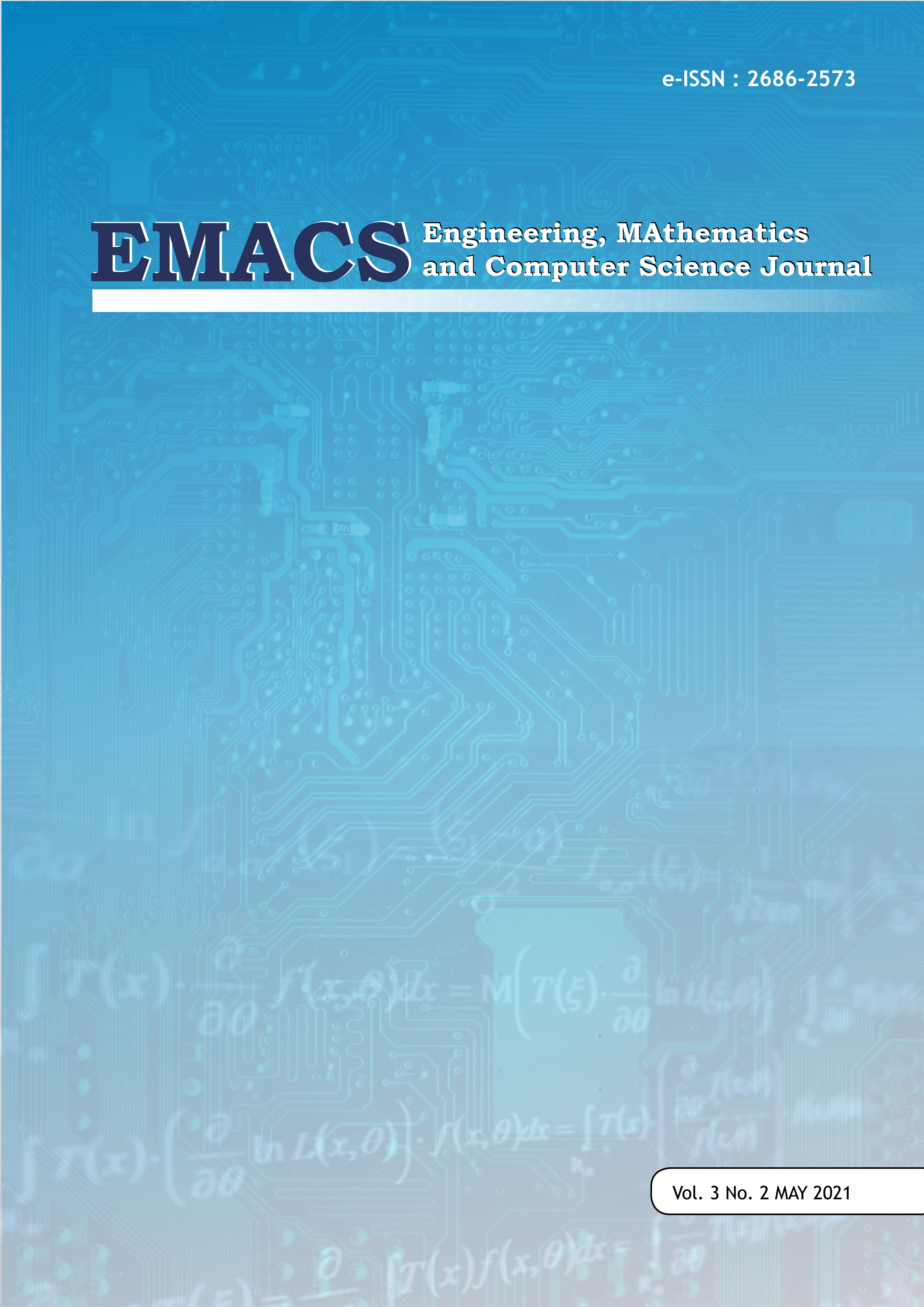Analysis of Voice Recognition System on Translator for Daily Use
DOI:
https://doi.org/10.21512/emacsjournal.v3i2.7018Keywords:
Linguistic, Multilinguistic, Voice Recognition, Translator, Voice Recognition Translator, Speech TranslatorAbstract
This research paper’s aim is to analyse the usage and the implementation of voice recognition system in translator device by reviewing some of literatures in aspect of linguistic and voice recognition system. This research purpose is to understand the procedure of how the voice recognition system is implemented and what the impact of using the translator device for daily use is in a lot of field. This paper also include a review about what is the importance of multilinguistic skill, what is the problem that we usually have in multilinguistic communication usually in global environment, How the basic system that usually use in voice recognition system so the reader can learn by describing the procedure of voice recognition system,In what way the implementation of voice recognition in translator device by providing some example of the devices, and How is the development of the translation devices and the example of translator device usage in society.
References
L. Studies, A. International, and A. Centre, “The Application of Mobile Devices in the Translation Classroom,†Adv. Lang. Lit. Stud., vol. 7, no. 6, 2016, doi: 10.7575/aiac.alls.v.7n.6p.237.
Y. Kharlamova, “Educative Aspect of Multilingual Education,†KnE Soc. Sci., vol. 2020, pp. 92–98, 2020, doi: 10.18502/kss.v4i13.7701.
J. Dewaele, B. Costa, and L. Rolland, “INTERACTIONS AND MEDIATION BETWEEN MULTILINGUAL CLIENTS AND THEIR Sally Rachel Cook | University of London,†no. November, pp. 1–4, 2020.
S. K. Arts, “A Voice Recognition Controlled Web Browser 1,†vol. 5, no. 3, pp. 218–220, 2020.
X. Huang, J. Baker, and R. Reddy, “A historical perspective of speech recognition,†Commun. ACM, vol. 57, no. 1, pp. 94–103, 2014, doi: 10.1145/2500887.
M. Q. Khairuzzaman, “No Title血清åŠå°¿æ¶²ç‰¹å®šè›‹ç™½æ£€æµ‹åœ¨ç³–尿病肾病早期诊æ–ä¸çš„æ„义,†vol. 4, no. 1, pp. 64–75, 2016.
H. S. I. Harba and E. S. I. Harba, “Voice Recognition with Genetic Algorithms,†Int. J. Mod. Trends Eng. Res., vol. 2, no. 12, pp. 144–155, 2018.
G. C. Hansen, K. H. Falkenbach, and I. Yaghmai, “Voice recognition system.,†Radiology, vol. 169, no. 2, p. 580, 1988, doi: 10.1148/radiology.169.2.3175016.
C. G. Krishnan, Y. H. Robinson, and N. Chilamkurti, “Machine Learning Techniques for Speech Recognition using the Magnitude,†J. Multimed. Inf. Syst., vol. 7, no. 1, pp. 33–40, 2020, doi: 10.33851/jmis.2020.7.1.33.
R. Shanmugam, R. K. Patjoshi, S. R. Jena, and V. Gaur, “Desktop Assistant Based on Voice Recognition and Face Detection,†no. July, 2020.
Othman Saleh Mahdy, “A Review of Literature of Computer-Assisted Translation,†Lang. India, vol. 18, no. 9, pp. 340–359, 2018.
R. Dabre, C. Chu, and A. Kunchukuttan, “A Survey of Multilingual Neural Machine Translation,†ACM Comput. Surv., vol. 53, no. 5, 2020, doi: 10.1145/3406095.
N. T. Le, B. Lecouteux, and L. Besacier, “Disentangling ASR and MT Errors in Speech Translation,†arXiv, 2017.
Q. T. Do, T. Toda, G. Neubig, S. Sakti, and S. Nakamura, “Preserving word-level emphasis in speech-to-speech translation,†IEEE/ACM Trans. Audio Speech Lang. Process., vol. 25, no. 3, pp. 544–556, 2017, doi: 10.1109/TASLP.2016.2643280.
A. Berard, L. Besacier, A. C. Kocabiyikoglu, and O. Pietquin, “End-to-End Automatic Speech Translation of Audiobooks,†ICASSP, IEEE Int. Conf. Acoust. Speech Signal Process. - Proc., vol. 2018-April, no. February, pp. 6224–6228, 2018, doi: 10.1109/ICASSP.2018.8461690.
S. Nakamura et al., “The ATR multilingual speech-to-speech translation system,†IEEE Trans. Audio, Speech Lang. Process., vol. 14, no. 2, pp. 365–375, 2006, doi: 10.1109/TSA.2005.860774.
F. Ehsani, J. Kimzey, D. Master, K. Sudre, and H. Park, “Speech to speech translation for medical triage in Korean,†no. June, pp. 13–19, 2006, doi: 10.3115/1706257.1706260.
C. Search and P. P. Data, “| hao wakati mwilini kauno auto,†2018.
M. F. O. R. Voice, “( 12 ) United States Patent,†2019.
M.- Volume, “International Journal of Engineering Research & Management Technology,†vol. 0181, no. December, p. 333001, 2018.
Downloads
Published
How to Cite
Issue
Section
License
Copyright (c) 2021 Engineering, MAthematics and Computer Science (EMACS) Journal

This work is licensed under a Creative Commons Attribution-ShareAlike 4.0 International License.
Authors who publish with this journal agree to the following terms:
- Authors retain copyright and grant the journal right of first publication with the work simultaneously licensed under a Creative Commons Attribution License - Share Alike that allows others to share the work with an acknowledgment of the work's authorship and initial publication in this journal.
- Authors are able to enter into separate, additional contractual arrangements for the non-exclusive distribution of the journal's published version of the work (e.g., post it to an institutional repository or publish it in a book), with an acknowledgment of its initial publication in this journal.
- Authors are permitted and encouraged to post their work online (e.g., in institutional repositories or on their website) prior to and during the submission process, as it can lead to productive exchanges, as well as earlier and greater citation of published work.
USER RIGHTS
All articles published Open Access will be immediately and permanently free for everyone to read and download. We are continuously working with our author communities to select the best choice of license options, currently being defined for this journal as follows: Creative Commons Attribution-Share Alike (CC BY-SA)





